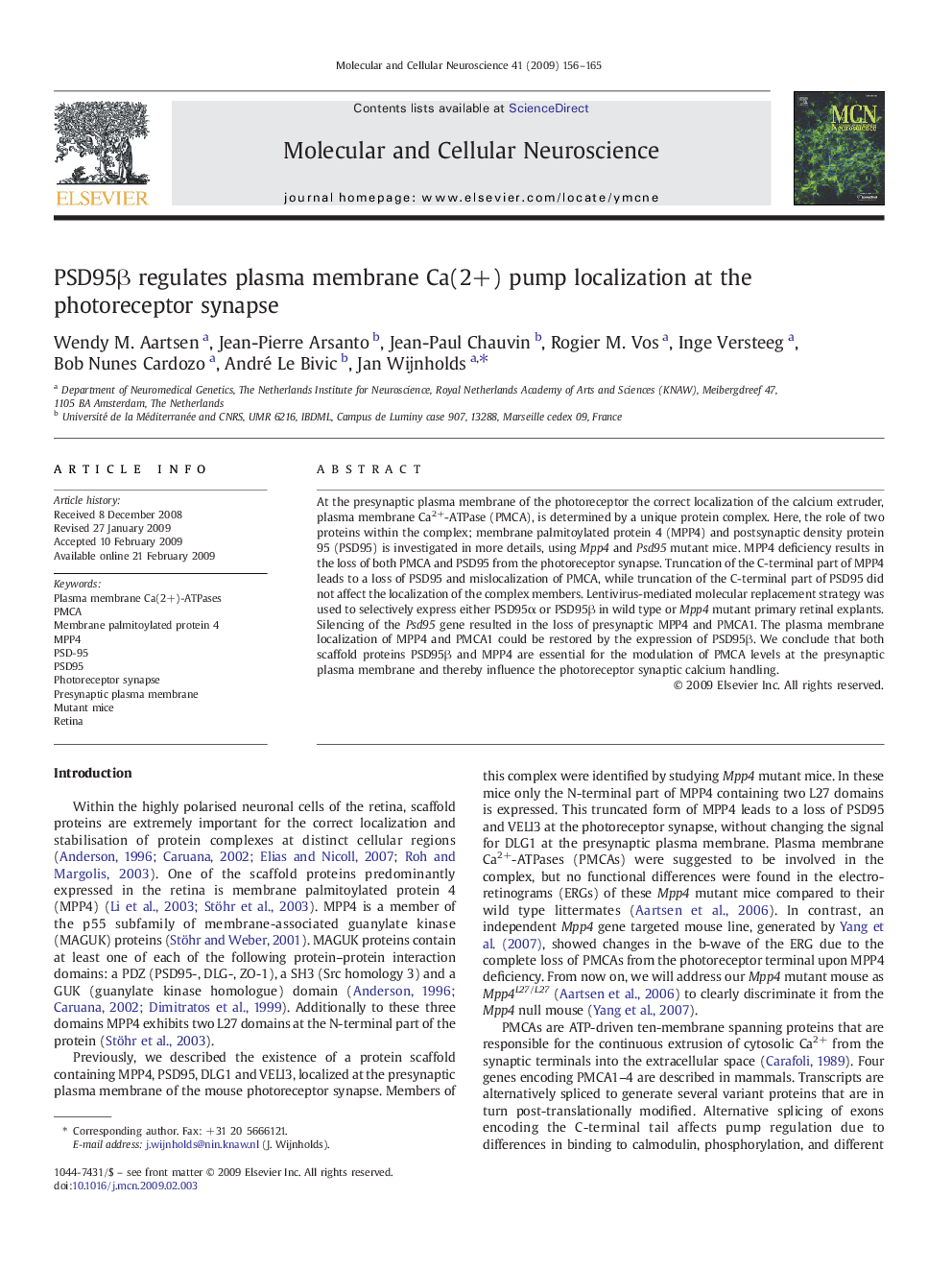| Article ID | Journal | Published Year | Pages | File Type |
|---|---|---|---|---|
| 2198739 | Molecular and Cellular Neuroscience | 2009 | 10 Pages |
At the presynaptic plasma membrane of the photoreceptor the correct localization of the calcium extruder, plasma membrane Ca2+-ATPase (PMCA), is determined by a unique protein complex. Here, the role of two proteins within the complex; membrane palmitoylated protein 4 (MPP4) and postsynaptic density protein 95 (PSD95) is investigated in more details, using Mpp4 and Psd95 mutant mice. MPP4 deficiency results in the loss of both PMCA and PSD95 from the photoreceptor synapse. Truncation of the C-terminal part of MPP4 leads to a loss of PSD95 and mislocalization of PMCA, while truncation of the C-terminal part of PSD95 did not affect the localization of the complex members. Lentivirus-mediated molecular replacement strategy was used to selectively express either PSD95α or PSD95β in wild type or Mpp4 mutant primary retinal explants. Silencing of the Psd95 gene resulted in the loss of presynaptic MPP4 and PMCA1. The plasma membrane localization of MPP4 and PMCA1 could be restored by the expression of PSD95β. We conclude that both scaffold proteins PSD95β and MPP4 are essential for the modulation of PMCA levels at the presynaptic plasma membrane and thereby influence the photoreceptor synaptic calcium handling.
